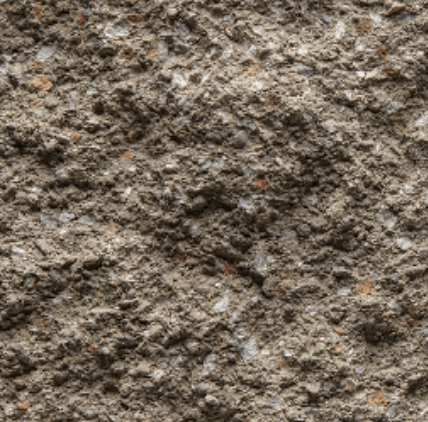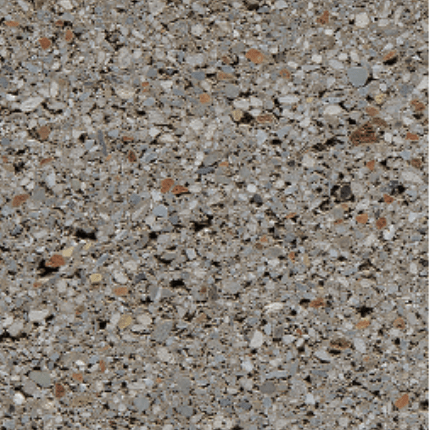TEXTURE OPTIONS:

Precision (SMOOTH)
The precision finish is the result of normal production, and has the characteristic of leaving a fairly opaque and consistent outer finish, which results from the finest ingredients in the mix design, (primarily cement and iron oxide pigments, if any), being pushed out to the outer face of the unit by the moisture in the mix design. Because the surface is loaded with the “fines” of the mix, precision units show the most saturation of colour. The other textures typically show less cement, less pigment, and more of the inner aggregates.

Split Face
A common texture on many freeway sound walls and buildings, the split face finish is produced by literally splitting two or more units from each other, after they have cured. Therefore, each split face unit is unique, and because the resulting split face dips in and out randomly, these units are produced in a slightly wider size, to ensure that a minimum face shell thickness is maintained, even when the texture dips in. Split face block can be a bit rough to the touch, and therefore is not recommended for interior use where human contact is likely. Similar to shot blast, the split face texture has a “pre-weathered” characteristic and holds up very well in harsher outdoor conditions.

Ground Face
A more expressive option is called the ground face that results from grinding the face of a precision unit, until all of the internal aggregates are showing. It has an appearance similar to terrazzo and can include a number of interesting aggregate colours, depending on the selected mix design. Ground face units are smooth to the touch, and should typically be treated with a post-applied sealer, to bring out the most intense colour of the block.
Contact your local product representative anytime to find out more.
The Top 3 aspects
you should keep in mind when selecting a block texture:
1: Texture affects colour
The greater the amount of exposed aggregates in a given texture, the less any iron oxide pigment can be seen. Hence, a precision texture shows more pigment than a split face texture. And the ground face texture shows the least amount of iron oxide pigment, since most of the surface is made up of exposed aggregates that have been ground smooth.
2: explore using multiple textures and one colour
Rather than designing with multiple colours of CMU on your next project, you might wish to explore using just one CMU colour, but in multiple face textures. As a rule of thumb, the rougher the texture, the more shadows are captured on the face of the block. As a result, a tone-on-tone effect can be achieved through the variation of block texture, alone. Additionally, textures are specific to each face of the CMU, and can be specified for one or more faces. For field units in the body of a wall, you might wish to specify a texture on just the outside or inside face of the block, but at the end of an exposed wall, for instance, you may wish to specify a texture on three sides, (front, back, and end). There are some limitations on how many faces can be specified with a texture. Consult your local product expert for more information on your available options.
3: some textures are better for cleanup
Some textures are better than others when it comes to graffiti exposure and cleanup. Generally speaking, smooth block textures present an attractive canvas for graffiti. Split face block seems to be less attractive to potential taggers. However, when it comes to cleaning up after a graffiti event, some textures can provide a lifetime resistance to graffiti, while others rely on a strict anti-graffiti coating routine, to maintain resistance to permanent damage. There are a number of concerns related to developing a successful anti-graffiti strategy, and you should consult your local product expert for more information.
HAVE QUESTIONS?

Materials Used: Ground Face Glacier Concrete Block

Prince George, BC
Materials Used: Ground Face Grey Concrete Block

Science Building
Materials Used: Ground Face 70/30 white Concrete Block

Materials Used: Ground Face Sandstone Concrete Block
